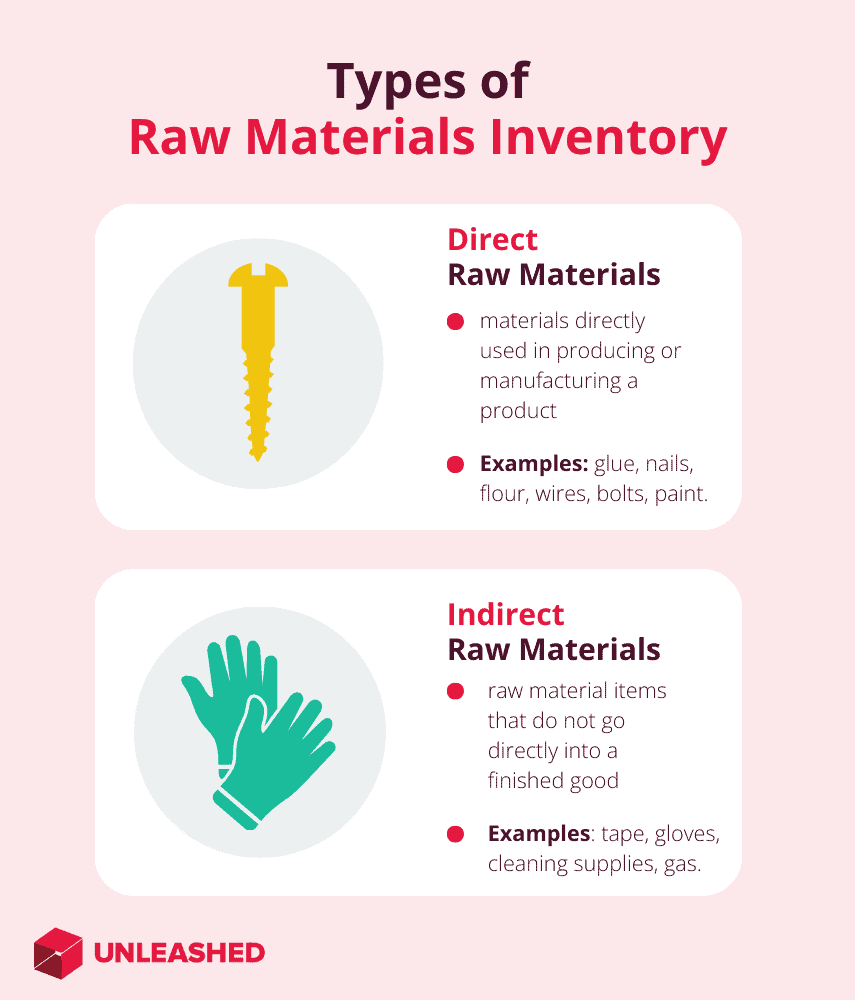
Manufacturing inventory management is crucial to the success and profitability of your manufacturing operations. It refers to the process of purchasing, storing, and tracking the various goods required to build a product.
This guide for manufacturers explains how it works and explores the most effective ways to manage inventory in manufacturing. We’ll look at modern manufacturing inventory methods, useful strategies, and manufacturing inventory management best practices.
What is manufacturing inventory management?
Manufacturing inventory management is the process of managing the raw materials, parts, components, and finished products held by a manufacturing company. This includes key activities such as the forecasting, ordering, receipt, storage, and auditing of inventory items.
The goal of manufacturing inventory management is to balance the supply and demand of products and minimise manufacturing costs and waste.
Manufacturing inventory management requires a coordinated approach across production, purchasing, sales, and logistics departments. It can be undertaken manually or with manufacturing inventory management software tools that automate and streamline your operations.

How it works: Inventory management in manufacturing
Manufacturing inventory management plans and tracks inventory across multiple stages of production. It optimises the flow of raw materials, work-in-progress, and finished goods in your manufacturing operations.
Here’s how the inventory management process might look in a typical manufacturing facility:
- Production needs are assessed to determine the number of goods needed to complete a job
- Existing stock levels are audited and subtracted from the total quantity of goods required
- The purchasing department prepares a purchase order listing the items needed and issues it to a supplier
- Once the supplier has shipped the goods, they are received by the manufacturing company and checked against the initial purchase order
- Supplier performance metrics such as delivery time, order accuracy, and product quality are noted for future reference
- The received items are put away in dedicated zones or locations
- Once production begins, the goods are picked from their respective locations and subtracted from the company’s on-hand inventory records
- Inventory is used in the production of a product, which itself becomes a new inventory item until it is shipped to the customer.
Inventory management in manufacturing can be influenced by the type of marketing strategy used. For example, a pull strategy may require more inventory to meet unpredictable demand, while a push strategy may require less inventory to avoid overstocking.
Inventory management is an important process for manufacturing businesses as it can help to reduce costs, streamline operations, and meet customer demand.
Types of inventory in manufacturing
There are distinct types of inventories in manufacturing that serve different purposes and have different costs and benefits:
- Raw materials are the basic and natural materials used in the first stage of production.
- Work-in-progress goods are partially finished products that undergo further processing.
- Finished goods are the end products that are ready for shipment.
- Maintenance, repair, and operation inventory support your production processes.
Here’s a quick breakdown of how each of the manufacturing inventory types should be managed.
Raw materials
Raw materials inventory is the basic inputs used to produce finished goods and one of the biggest sources of inventory waste in manufacturing. Perishable produce and limited-shelf-life inventory present a variety of operational, planning, and inventory management challenges. For this reason, food manufacturers in particular run a high risk of spoilage and waste.
Bulk purchasing of raw materials provides manufacturers with a buffer against spikes in customer demand, and supply chain issues. Ordering larger quantities also helps you to achieve economies of scale and reduces freight and transport expenses, but too much raw material inventory means an increased risk of waste.
Keep raw materials inventory levels to a minimum to avoid excess storage costs and spoilage risks.

Work-in-progress goods
Work-in-progress inventory refers to the partially completed products that are still undergoing the production process. They’re necessary to ensure a smooth flow of operations and to avoid bottlenecks or delays.
Effectively managing work-in-progress inventory helps reduce waste, optimise production, and improve cash flow.
Quick tips for managing WIP inventory:
- Track the quantity and value of work-in-progress inventory at each stage of production.
- Implement quality control measures to prevent defects or rework.
- Align the production schedule with the demand forecast and customer orders.
Finished goods
These are the final products that are ready for sale or delivery to customers. Finished goods inventory is usually the largest and most valuable type of inventory in manufacturing, as it represents the revenue potential of the business.
The main objective of finished goods manufacturing inventory management is to reduce inventory costs, improve customer satisfaction, and optimise production capacity. This is achieved through efficient planning, ordering, storing, and delivery of finished goods in a timely and efficient manner.
Maintenance, repair, and operations
Maintenance, repair, and operations (MRO) inventory are the items that are used to support the production process, such as tools, spare parts, and lubricants. MRO inventory is essential to prevent breakdowns or disruptions in the production process.
MRO inventory management aims to optimise the availability and utilisation of manufacturing equipment to improve the efficiency, productivity, and profitability of your manufacturing business.
How to manage inventory in manufacturing
Managing inventory in manufacturing involves balancing the supply and demand of your raw materials, work-in-progress, and finished goods – as well as minimising your storage, handling, and transportation costs.
Some common techniques used to manage inventory in manufacturing are:
- Forecasting your demand based on historical data, market trends, and customer orders.
- Determining your optimal inventory levels and reorder points for each item based on lead times, safety stocks, and service levels.
- Ordering and purchasing the required materials from suppliers at the right time and quantity.
- Tracking and recording the receipt, movement, and consumption of materials throughout your production process.
- Implementing inventory control techniques such as ABC analysis, cycle counting, and batch tracking.
- Analysing your inventory performance to identify areas for improvement or optimisation.
- Undertaking regular inventory audits and reconciliations to ensure your inventory accuracy and prevent discrepancies.
Let’s look at some of the ways you can execute these processes.

Manufacturing inventory management methods
By implementing the right manufacturing inventory management methods, you’ll be able to optimise your production processes and reduce costs. Here are some of the most popular approaches to consider.
ABC analysis
ABC analysis categorises inventory items based on their value and usage frequency and allocates different levels of control and monitoring to each category. The most valuable ones are allocated A, followed by the moderately valuable B items, and then the least valuable C items.
Batch tracking
Batch tracking is the process of recording and tracking the movement of batches of products or materials throughout the supply chain. Batch tracking helps to ensure quality control, traceability, and compliance with regulations. Batch tracking can also improve manufacturing efficiency, reduce waste, and prevent errors or fraud.
Cycle counting
Cycle counting is a manufacturing inventory management method that involves counting a small portion of inventory items regularly, rather than conducting a full physical inventory count at the end of a period. It helps to identify and correct errors, improve accuracy, and reduce disruption to operations.
Demand forecasting
Demand forecasting is a method that involves estimating the future demand for manufactured goods based on historical data, market trends, and other factors. Demand forecasting helps manufacturers plan their production, inventory, pricing, and marketing strategies to meet customer needs and increase profits.
Materials requirements planning
Material requirements planning is a method that uses computerised systems to plan and schedule the production and purchase of materials based on forecasted demand and inventory levels.
Perpetual inventory management
Perpetual inventory management is a method that involves continuously recording inventory changes in real time using automated software and input devices. It eliminates the need for physical inventory counts and provides an accurate view of your stock levels.
Vendor-managed inventory
Vendor-managed inventory is a supply chain management strategy whereby the supplier monitors and replenishes the inventory levels of its customers. It aims to reduce stock-outs, improve customer service, decrease inventory costs, and enhance collaboration and communication between you and your customers.
Manufacturing inventory management strategies
Next, here are a few examples of useful strategies for managing manufacturing inventory. Each strategy has its advantages and disadvantages, and you should choose the one that best suits your business goals, production processes, and customer demand patterns.
Just-in-time (JIT) inventory management
Just-in-time stock control is a strategy where inventory is ordered and received only when it is needed. This reduces your levels of on-hand inventory stock and minimises storage costs and waste. The goal of JIT is to keep inventory stock as low as possible across the organisation and its supply chain.
JIT manufacturing offers an easy way of organising your production processes and product distribution to minimise costs and flow times. It’s based on an approach that involves people, plants, and systems.
Successful implementation of JIT involves the efficient use of manufacturing resources and capabilities. Online inventory management software is essential for JIT manufacturing because it helps you optimise inventory levels – a key aspect of the JIT strategy.
Economic order quantity (EOQ)
One of the most important aspects of manufacturing inventory management is the EOQ model.
This model helps determine the optimal order size and frequency for a given product, based on the demand, holding cost, and ordering cost. The EOQ model minimizes the total inventory cost by balancing the trade-off between holding too much or too little inventory.
EOQ can help manufacturers improve cash flow, reduce storage space, avoid stockouts, and save on ordering costs. However, the EOQ model also has some limitations, such as assuming constant demand, fixed costs, and no discounts.
You should use the EOQ model as a guideline, not a rule, and adjust your order quantities according to changing market conditions and customer preferences.
Activity-based costing
Activity-based costing (ABC) is a technique that allocates overhead and indirect expenses like wages and utilities, to the products and services that consume them. Activity-based costing is primarily applied in the manufacturing sector because it improves the accuracy of cost information. It reflects more realistic costs and better categorises the costs incurred by you during your company’s production process.
ABC can help you identify and eliminate non-value-added activities, optimise the use of resources, and improve the accuracy of product or service costing. ABC can also support strategic decisions like pricing, outsourcing, and product mix.

4 manufacturing inventory management best practices
Best practice manufacturing inventory management involves planning, tracking, ordering, storing, and delivering the right amount of inventory to meet customer demand. The following best practices help to optimise the flow of materials and products in your manufacturing business while reducing costs.
1. Implement lean manufacturing
Lean manufacturing is a business philosophy that aims to eliminate waste and improve efficiency in production processes. This makes it an especially valuable tool for small-scale manufacturers who want to grow their business and compete in the market.
Employing lean methods in production helps to prevent the underutilisation of equipment and to minimise the risks associated with perishable inventory and dated stock leading to manufacturing waste.
2. Regularly audit your inventory management processes
An inventory management audit evaluates and improves the efficiency and effectiveness of inventory management in a manufacturing organisation.
Auditing aims to identify the strengths and weaknesses of your current inventory management system, compare it with the industry standards and best practices, and provide recommendations for improvement.
A complete audit should cover various aspects of inventory management, such as:
- Demand planning
- Forecasting
- Ordering
- Receiving
- Storing
- Issuing
- Tracking
- Reporting
An audit also assesses the impact of inventory management on the overall performance of your business, considering factors like customer satisfaction, product quality, production efficiency, and profitability.
Conduct regular inventory audits and cycle counts to ensure accuracy and to identify discrepancies.
3. Continuous improvement
Continuous improvement for manufacturing inventory management is the process of constantly evaluating and optimising the performance of your inventory system. It involves identifying and eliminating waste, reducing costs, increasing efficiency, and enhancing customer satisfaction.
Key steps for implementing continuous improvement for manufacturing inventory management:
- Define your current state and the desired state of your inventory structure.
- Measure the key performance indicators of your inventory system.
- Analyse the root causes of any inventory problems and gaps.
- Implement solutions to address these root causes to improve the inventory system.
- Monitor and evaluate the results and adjust as needed.
- Repeat the cycle of improvement at regular intervals.
4. Use manufacturing inventory software
Manufacturing inventory software like Unleashed can be used to automate inventory tracking, forecasting, and replenishment. This makes it easier to effectively manage inventory levels, track your production processes, and optimise supply chain operations.
Manufacturing inventory software can also help you reduce costs, improve efficiency, and increase customer satisfaction. Using better technology and automation can enhance the customer experience and increase customer satisfaction.
Manufacturing inventory management tools
Manufacturing inventory management tools refer to equipment and software that help manufacturers track, control, and optimise their inventory levels.
Some common examples of manufacturing inventory management tools include:
- Barcode scanners
- RFID tags
- Pallet trucks
- Forklifts
- Inventory management software
- Production planning software
- Storage bins and bin dividers
Investing in the right tools will help you optimise the flow of goods in and out of your manufacturing facilities. This helps you reduce costs and speed up order fulfilment, benefitting both the company and your customers.
Manufacturing inventory management software
Manufacturing inventory management software helps you track your raw materials, finished goods, and work-in-progress items.
Key features of effective manufacturing inventory software include:
- Barcode scanning for accurate and fast data entry
- Real-time inventory visibility and reporting for better decision-making
- Demand forecasting and replenishment planning for optimal inventory levels
- Inventory optimisation and waste reduction for improved profitability
- Integration with other systems such as ERP, CRM, and accounting software for seamless data flow
- Inventory tracking to monitor the quantity, location, and status of your available stock
- Production planning helps you to plan production schedules, allocate resources, and forecast demand
- Material requirements planning calculates the optimal amount and timing of materials needed for production
- Bill of materials features ensure all the necessary parts are available for each assembly
- Multichannel order management for unifying sales across different platforms
To get started with manufacturing inventory software, start your free 14-day trial of Unleashed today.
